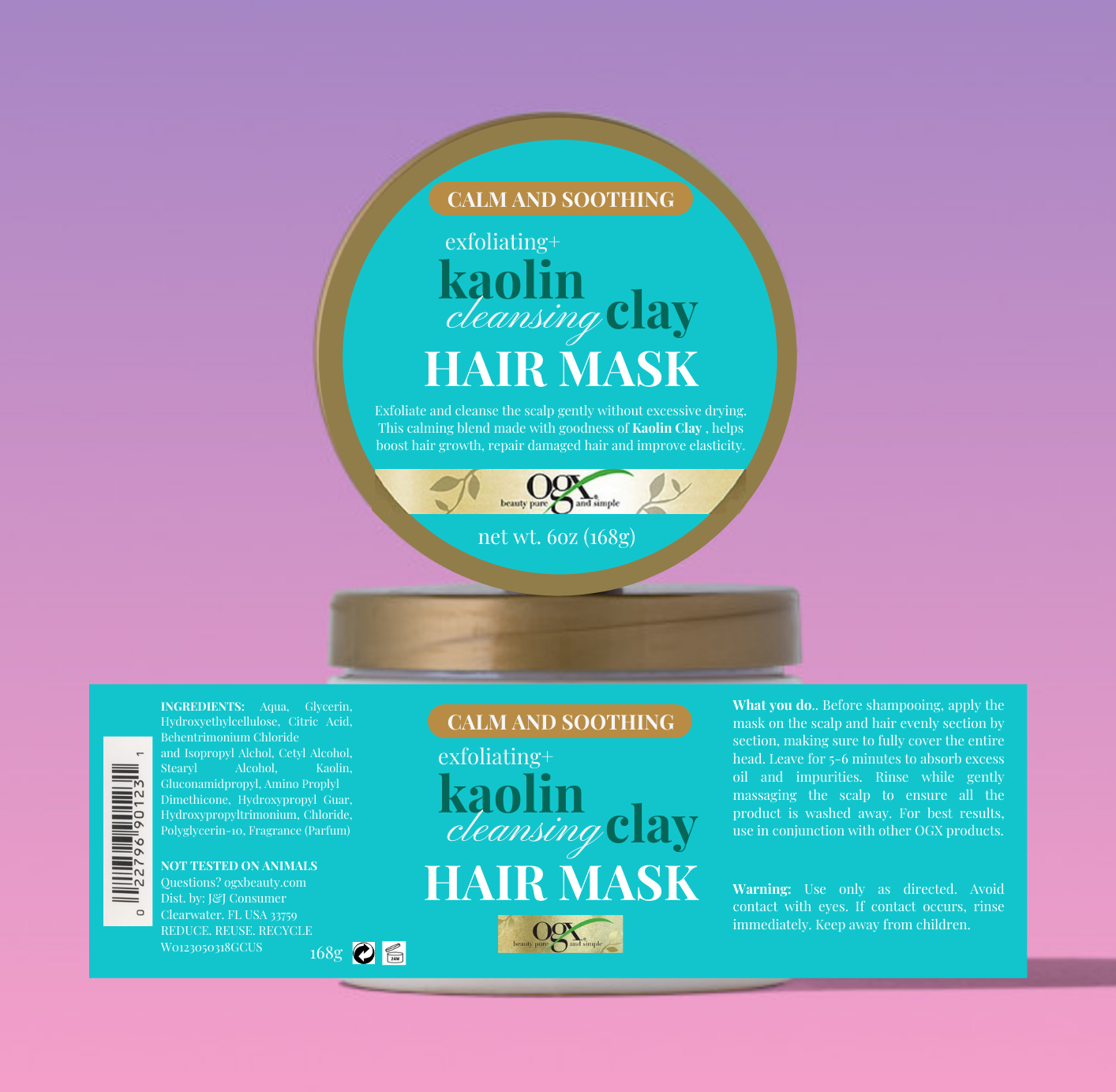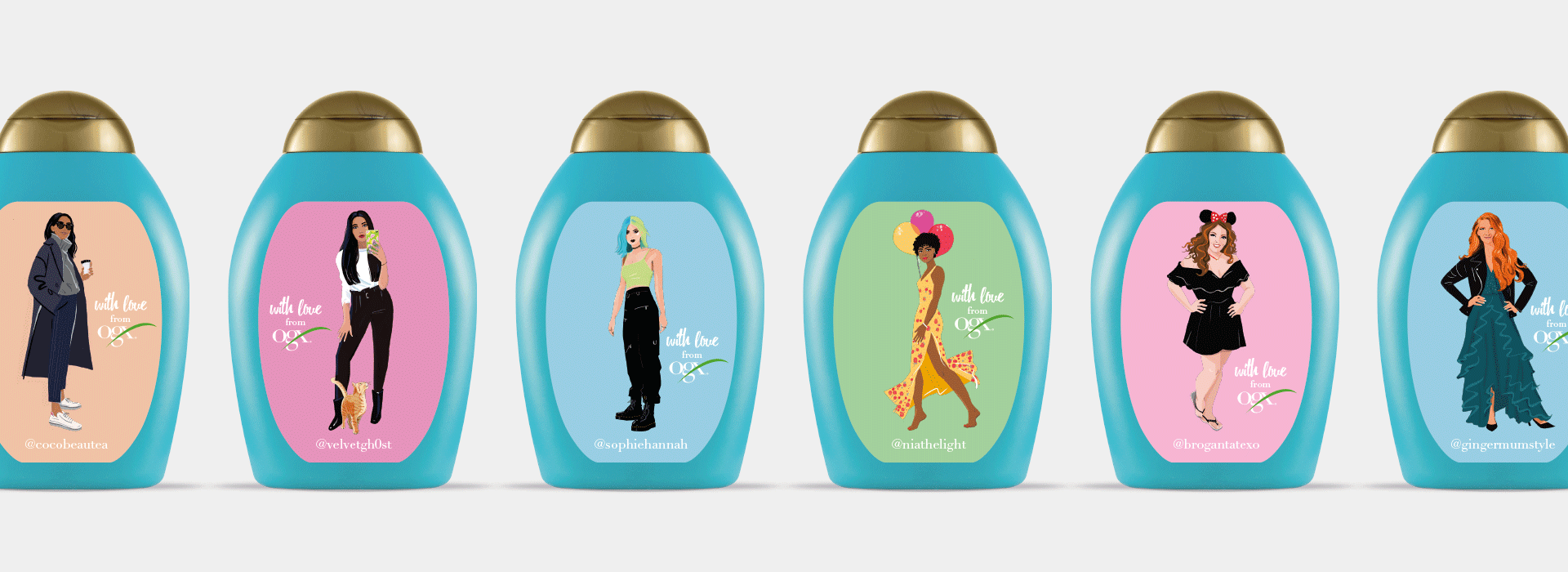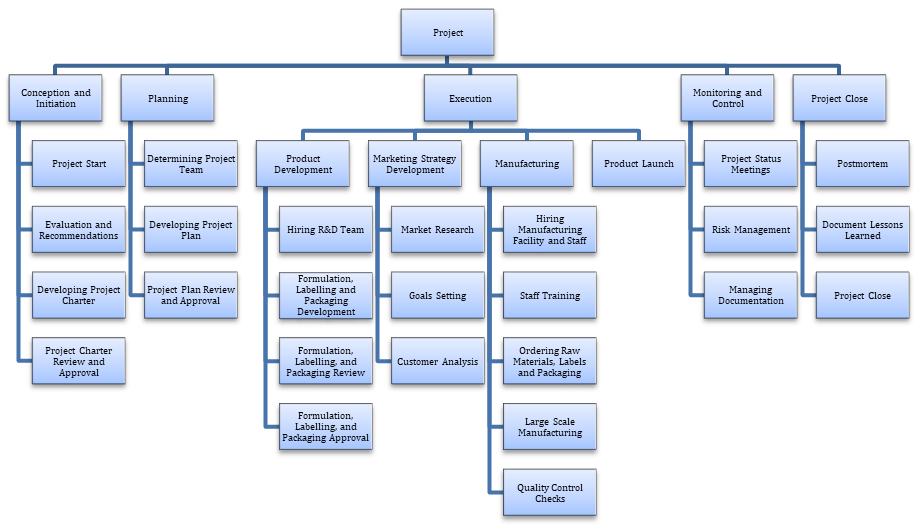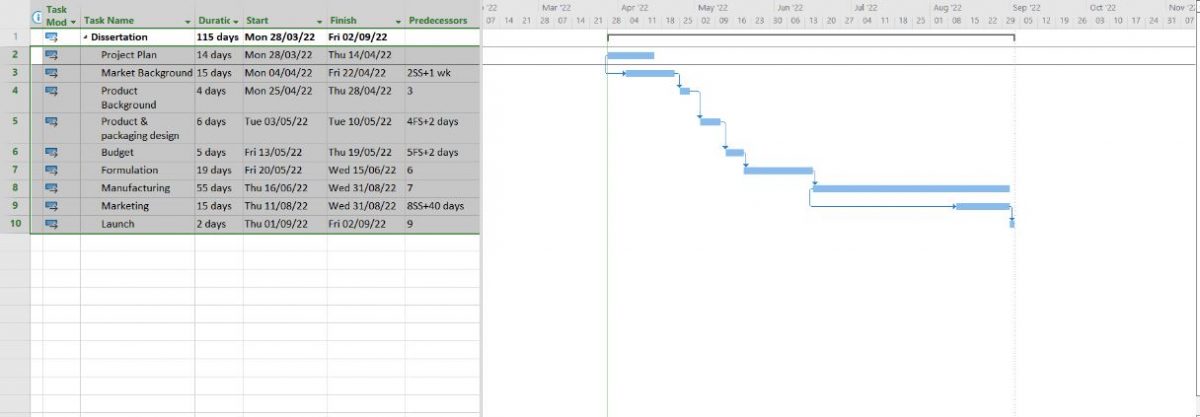Product and Packaging Requirements
Since its inception in 1999, OGX has been enthralled by brilliant ideas, and its clients recognize the difference its inventive and results-oriented concepts make. Straight-up design is not the only way OGX brings creative ideas to life. OGX can also help people determine the best strategy to promote and improve their businesses through digital, video, newspaper, social media, or predicting the future.
What motivates OGX is to bring different brands to life across various media. Despite varying business costs or objectives, firms can count on a high degree of originality and forensic precision. OGX has a wealth of expertise and is continually learning new things. They are always looking for new sources of inspiration, studying from them and publishing the results with their clientele. OGX helps people design exceptional outcomes in whichever sector they are positioned in. OGX is a specialist in B2B, D2C, B2C, and corporate communications campaigns.
Originality inspires OGX, reflecting on what they are doing, from how the company creates and packs its goods to the actual, diverse, and photo editing people representing the brand. OGX vow to learn what people like about themselves so that they can utilize science to assist clients in appreciating it even more. OGX attempt to create an unforgettable experience by utilizing only the highest quality and most effective components (OGX | Global hair care superstars | Dunk Design, 2022). Its pledges to promote diversity by honoring, recruiting, and designing products for people of various races, ethnicities, religions, and styles. Its recipes are constantly evolving by a group of scientists to provide a spa-like experience with salon-quality security and ingredient requirements. OGX ingredients include Moroccan Argan oil, tea tree mint, coconut milk, and shea butter. Its treatments do not find ingredients that harm, strip, or dry out hair.
A handful of the substances OGX do not use in its preparations include parabens, formaldehyde donors, plastic microbeads, and phthalates, which are sulfated surfactants. Silicone-free and colorant-free product lines have been introduced to help all genders shine. Inclusive is at the heart of all OGX does, from whom it recruits to who promotes the firm and how OGX designs its goods to accommodate a wide range of fabrics and ‘dos. Inclusion impacts how OGX presents itself globally: it actively promotes social equality. By 2025, the firm plan to make all of its bottles disposable (OGX | Global hair care superstars | Dunk Design, 2022). It is working on waterless alternatives that will reduce baggage and decrease the amount of fuel used in transportation. The primary objective of the OGX project is to develop a new product; its entry and segmentation plan targets Generation z. The product is an Exfoliating+ Kaolin Cleansing Clay Hair mask whose packaging requirements need a net weight of 168g and a price of £9.99. The product information is in Appendix 1, and the company profile is in Appendix 2.
The product will be used 2-3 times a week before shampooing, allowing it to sit for 5-6 minutes. Its desired functions include cleansing and exfoliating the scalp, balancing the pH, detoxifying the scalp and hair, stimulating hair growth, improving hair elasticity, and absorbing excessive oil. The project scope includes launching the new product, identifying the key stakeholders, project exclusion, project scheduling, project constraints: cost and time, and recognizing the project risks. The product leaves the rest of the hair refreshed by the organic and mild component list (OGX | Global hair care superstars | Dunk Design, 2022). Rather than attempting to rectify or make the hair appear ideal, it strives to make it more significant than it currently is. The project’s primary goal is to help OGX unveil a new brand called Kaolin Hair Mask, designed for dry, greasy, and regular hair. The item will only be available in Europe and the United Kingdom.
Project Budgeting
When a firm embarks on a venture, it must allocate resources and the associated costs. The business must sketch these expenses from an essential budget to ensure that it meets cash flow and forecasts for profits. Project budgets are calculated using a work breakdown and the required resources and per-unit prices based on fundamental values, normalized costs, and charges from previous significant programs. The project leader allocates costs to different project elements, adds operational costs to cover administrative expenses, and determines a contingency sum in case of unforeseen challenges. A project budget presents a thorough estimation of all expenses that the project supervisor will most likely spend before completing the task (Kwon & Kang, 2019, p. 90). The entire expected cost of performing each project during each stage of a project is a budget, which helps set spending objectives and is required for confirmation, ensuring resources are available on schedule, and monitoring performance.
A budget is a living document that constantly monitors, examines, and updates as the project progress. The target cost assists in decision-making, including choosing whether to proceed with the program or determining how much to spend on specific project tasks. Forecasts inform stakeholders about the amount of money required (Techniques, 2022, para. 2). They give the project managers a starting point to see if the venture progresses in the right direction (Kabeyi, 2019, p. 70). One may readily identify areas that require attention if one knows money available for project activities. Having the correct human resources accessible is one of the most challenging aspects of the project. The project allocation can help businesses determine what capabilities they will need and how long, which is particularly valuable when staff is employed on multiple initiatives (The Ultimate Guide to Project Budgets | AIPM, 2022, para. 6). The statement is a valuable management tool for determining whether projects are on track to fulfill company objectives.
Budgets aid in prioritizing duties that can be done by teams within the constraints of available resources, which may mean limiting objectives. Still, one will be meeting expectations. It aids in the development of future planning and strategy. Labor, material procurement, and expenditures are typical costs of budgeting initiatives. The budget plan allows project managers to estimate the cost at the outset (Musarat, Alaloul, and Liew, 2021, p. 410). It allows project managers to monitor whether the venture stays on a budget throughout the project’s life cycle. The planned project is obligated to stay within the allocated budget to ensure that all the money is put to the best possible use. The overall budget to launch the new commodity is set at £300,000 and is budgeted in Appendix 8.
Challenges and Sourcing Process
The project experienced several challenges throughout its introduction, notably cost and time limits. The project’s cost covers all monetary resources needed to complete the venture on cost and schedule. Cost refers to the price of goods and includes labor, suppliers, quality assurance, and other characteristics of prices (Product Costs, 2022, para. 1). The time restraint relates to the actual accomplishment timetable, which comprises a deadline for each design process and the dates for the end deployment (What Are Constraints in Project Management? 2022, para. 1). Materials, licenses, personnel, and the economic effects of members involved in the project are included in the budget, which comprises variable and fixed expenses (Yuan, Luo, and Shi, 2021, p. 6090). Because a project needs money, assets are strongly linked to cost limits on a project. Without adequate capital allocation, the quality of the project may suffer, as well as budget and deadline setbacks. Therefore, project teams will have to stick to a timetable to avoid challenges. The five-step process included in sourcing entails starting and organizing, selecting, agreement writing, reviewing, and finalizing.
Detailed Formulation of the Product
Sinerga Raw Materials Lab conducts research and development to expand Sinerga’s array of cosmetic specialties and enhance product formulation. R&D was the chosen raw material built by the project team based on two pillars: high technology and common environmental effect (Raw Materials Lab, 2022). Their benefits included facilitating the manufacture and encapsulation of active raw materials, whereby the team used high-performing procedures. It used renewable energy sources and energy-saving techniques (Raw MMaterialsLab, 2022). Li.ami.aci, encapsulation, and micro more were among sinerga’s unique technologies. Lipoaminoacids, vegetable-derived compounds with excellent dermo-affinity and performance, are made using Sinerga’s unique method. The technicians pooled their knowledge and talents to develop novel ingredients to fulfill market demands. Sinerga Trend Lab was a source of inspiration for the innovation department by guiding research in line with the real-world dynamics of the skincare market (Raw MaMaterialsab, 2022). In silico tests were used to research active compounds. The materials used in the product’s formulation are shown in Appendix 3, with their benefits and prices.
Project Team and Plan
Project Plan
A program plan defines the project’s aims and outcomes and the responsibilities and approaches for attaining them. It indicates the income the project will require and the finances and schedules for success (Watt, 2022, para. 3). A design phase outlines all work that should be done by the team and each member’s duty. A project schedule, resources required, WBS, a project schedule, and a strategic plan are all standard mechanisms of a scheme. The project plan was estimated to take 14 days, starting on March 28, 2022, and ending on April 14, 2022.
Project Team
Project teams consist of project managers and a collection of persons who team up on a given project to accomplish its objectives. It encompasses the development manager, senior project administration, and additional individuals who may control projects but achieve project-related actions (Narayanan & Huemann, 2021, p. 455). The group comprises members from numerous crews who have explicit content and skills or the essential knowledge base to accomplish the project’s responsibilities. A project group’s structure and features vary over time, but the task manager’s purpose as the group captain remains reliable. This project comprised three teams, including squads 1, 2, 3, and 4. Team number 1 played various roles, including formulation, budget breakdown, analysis, risk analysis, stages of product/ timeline, planting and manufacturing, product launch, product development, and product organization. Team number 2 roles included: product and packaging, marketing and samples, and quality assurance. Team number 3 roles involved: outlining the background of the company, relevance – market and consumer, market and company research, and project life cycle, while the last team number 4 constructed the timeline
WBS Diagram
WBS stands for “work breakdown structure,” It takes various approaches to complete intricate projects. A WBS helps assimilate scope, price, and outputs into a unified platform by dividing the work into smaller parts (Ulusoy & Hazır, 2021, p. 55). The task is defined and organized using a work breakdown structure (WBS). Allocating work approximations to particular WBS sections helps quickly manufacture a schedule to identify possible scope matters. The project’s WBS is shown in Appendix 4.
Project Gantt Chart
Gantt chart describes a figure that helps plan, manage, and pursue special events and project incomes. It comprises a series of activities with development blocks for each action. Visualizations usually are used (Lee & Shvetsova, 2019, p. 917). It is usually used in significant businesses to construct software engineering and form other products and services. The plan’s Gantt chart is shown in Appendix 5.
Critical Path
The utmost important policy for executing CPM is creating a classical project, which comprises: all activities required to finish the plan, the task needs, and the duration of each action. The critical path lists a series of project responsibilities (Akhmetshin et al., 2019, p.10). Teams define the critical route by finding the most extended period of related events and evaluating them from beginning to end. Therefore, from the Gantt chart shown in appendix 5, the project’s critical path is 55 days since it is the most extended period the project takes to accomplish.
Risk Assessment and Compliance Challenges
For the product to be launched, it must be harmless to practice and observe guidelines to be utilized. Therefore, several quality testing rounds must be done to prove product safety. The Project Risk Assessment and compliance challenges include changing regulations, product failure, safety issues, and the potential ingredients ban (Robinson et al., 2020, p.460). However, risk analysis plays a vital role in recognizing and investigating potential matters that could undesirably impact key commercial enterprises or developments. Risk analysis was conducted to mitigate the risks, while quality assurance ensured consumers could trust and rely on the launched product. Risks come in various ways, and project members detect and manage them.
Without a systematic risk analysis, a project will not succeed since it will result in a low-impact appraisal, lack of accountability, and ineffective communication in and outside the team. As a result, any program manager must establish a sound risk management structure. Implementing such a technique as a venture team culture guarantees aware and concentrated risk monitoring and assessment, desired project success, timely and practical discussion of project difficulties, and an outstanding team. Risk analysis enables teams to assess the hazards an individual or a company faces and determine how the crew will establish decisions (Hirman et al., 2019, p. 1188). Companies conduct Risk Assessments by detecting risks and conniving the likelihood of those dangers happening. After firms have determined the significance of the hazards they encounter, they can begin to think of ways to control them successfully by deciding to minimize the danger and share or accept it while diminishing its significance. Appendix 7 highlights the probability of the occurrence of the risks during the project.
Product Final Validation Advantages
Validation is the process of ensuring that you have created the correct item and that it fits the needs of your consumers. Analysis, inspection, demonstration, and testing are the four methods used to validate service (Modernanalyst.com, 2022). Based on the computed statistics produced from lower framework end product confirmations, analysis use computational models and analytical tools to anticipate the compatibility of a solution to stakeholder requirements. When a sample, engineering design, or fabricated, integrated, and the integrated item is not accessible, analysis is typically utilized. Analytical tools such as simulating are used in the analysis. The modification of a prototype is what a simulation is that proves that using a finished product meets stakeholders’ expectations as specified. It is a simple validation of cognitive capability that differs from examination in that it does not collect extensive data.
In most cases, inspection is done to verify the existence of physical design characteristics or particular manufacturer identifiers. Project Validation tries to prove or disprove whether the project team can produce a project that meets the owner’s strategic plan and ranges within the authorized schedule (Altinok, Artuner, H. and İpek, 2021, p.4). When it comes to reconciling tangible advantages, teams create a template that closely resembles the organization’s income statement while also incorporating the physical results of the project into the budget process. As a result, the organization can define project advantages and has recourse to a tool that calculates subsequent financial year objectives and deliveries. Adopting a program benefit validation procedure for Business Improvement initiatives improves ROI precision, project reporting, and internal financial controls. Managers can implement the procedure at any maturity phase of an Advancement deployment if the organization employs a project planning portfolio database. When the model is combined with a comprehensive database system, a distribution has all of the components needed to support a world-class governance framework and the successful execution of continuous business improvement.
The Product Validation Procedure verifies that the completed product meets client requirements in the planned operational contexts, with validation conducted by anticipated controllers and users. The validation factor is performed by the life cycle phase and the location of the finished product inside the framework. It verifies that the final product performs as expected when used in the designated setting. Validation is done for each integrated and confirmed final result from the most miniature finished goods in an optimum system stem to the top-level end product. Validation creates evidence to ensure that goods at each level of the system hierarchy meet the capabilities and other operating requirements of the customer and other relevant individuals (Altinok, Artuner, H. and İpek, 2021, p.4). It verifies that the individual has been completely assimilated into the technology. It ensures that any issues detected are adequately addressed before the ultimate product is delivered (if the company’s provider undertakes verification) or before it is integrated with other items into an elevated type of process conducted by the receiver.
Reference List
Aipm.com.au. (2022) The Ultimate Guide to Project Budgets | AIPM. Web.
Akhmetshin, E.M., Romanov, P.Y., Zakieva, R.R., Zhminko, A.E., Aleshko, R.A., and Makarov, A.L. (2019) Modern approaches to innovative project management in entrepreneurship education: A review of methods and applications in education. Journal of Entrepreneurship Education, 22, pp.1-15. Web.
Altinok, Y.K., Artuner, H. and İpek, A.H. (2021, December) Verification and Validation Methods Selection Based on Goal-Oriented Categorization for Simulations. In 2021 2nd International Informatics and Software Engineering Conference (IISEC) (pp. 1-5). IEEE. Web.
Corporate Finance Institute. (2022) Product Costs. Web.
Dunk Design. (2022) OGX | Global hair care superstars | Dunk Design. Web.
Hirman, M., Benesova, A., Steiner, F. and Tupa, J. (2019) Project management during the Industry 4.0 implementation with risk factor analysis. Procedia Manufacturing, 38, pp.1181-1188. Web.
Kabeyi, M.J.B. (2019) Evolution of project management, monitoring, and evaluation, with historical events and projects that have shaped the development of project management as a profession. Int J Sci Res, 8(12), pp.63-79. Web.
Kwon, H. and Kang, C.W. (2019) Improving project budget estimation accuracy and precision by analyzing reserves for both identified and unidentified risks. Project Management Journal, 50(1), pp.86-100. Web.
Lee, S. and Shvetsova, O.A. (2019) Optimization of the technology transfer process using Gantt charts and critical path analysis flow diagrams: Case study of the korean automobile industry. Processes, 7(12), p.917. Web.
Modernanalyst.com. 2022. What Are the Four Fundamental Methods of Requirement Verification? Web.
Musarat, M.A., Alaloul, W.S. and Liew, M.S. (2021) Impact of inflation rate on construction projects budget: A review. Ain Shams Engineering Journal, 12(1), pp.407-414. Web.
Narayanan, V.K. and Huemann, M. (2021) Engaging the organizational field: The case of project practices in a construction firm to contribute to an emerging economy. International Journal of Project Management, 39(5), pp.449-462. Web.
Robinson, C., Portier, C.J., Čavoški, A., Mesnage, R., Roger, A., Clausing, P., Whaley, P., Muilerman, H. and Lyssimachou, A. (2020) Achieving a high level of protection from pesticides in Europe: problems with the current risk assessment procedure and solutions. European Journal of Risk Regulation, 11(3), pp.450-480. Web.
Sinerga. (2022) Raw Materials Lab. Web.
Techniques, P. (2022) Project Budgeting Explained. Project Management Skills. Web.
Ulusoy, G. and Hazır, Ö. (2021) Planning and Network Modeling of Projects. In An Introduction to Project Modeling and Planning (pp. 49-100). Springer, Cham.
Watt, A. (2022) 12. Budget Planning. Opentextbc.ca. Web.
Wrike.com. (2022) What Are Constraints in Project Management? Web.
Yuan, H., Luo, Q. and Shi, C. (2021) Marrying stochastic gradient descent with bandits: Learning algorithms for inventory systems with fixed costs. Management Science, 67(10), pp.6089-6115. Web.
Appendix
Appendix 1: Product information

Appendix 2: Company profile

Appendix 3: Detail Formulation table with cost
Appendix 4: WBS table

Appendix 5: Gantt Chart
